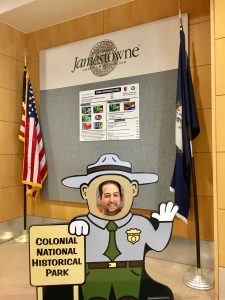Historic Jamestown, just a few miles away from our place in Williamsburg, seemed like a nice spot to visit on a lovely September day. With Ryan and Chris on board, we headed out to visit this site.
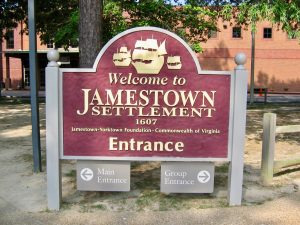
As we were getting in line for our entrance tickets we discovered that Tony and Gloria were also there – and just in front of us – and it was great to visit with them again. (they were at the 50th anniversary celebration that was held the prior evening).
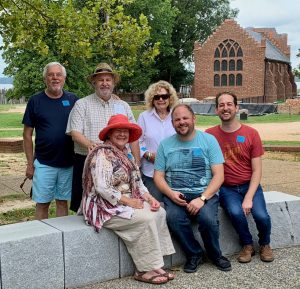
Jamestown was the first permanent English settlement in the Americas. Started by the Virginia Company of London as “James Fort” on May 4, 1607 along the banks of the (now) James River (originally Powhatan River). The location was chosen as a site in a secure place, where Spanish ships could not fire point blank into the fort. Within days of landing, Powhatan Indians attacked the colonists. As a result of the hostilities, the newcomers spent the next few weeks working to create a wooden fort.
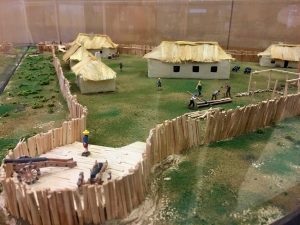
It is inside this fort that England’s first permanent colony took hold.

Of course it wasn’t easy. Disease, famine, and sporadic attacks from the neighboring Powhatan Indians took a tremendous toll on the early population, but there were also times when trade with the Indians revived the colony with food in exchange for glass beads, copper and iron tools. Relations with the local Indians quickly soured and the colonist would eventually annihilate the Paspahegh in warfare over the next four years.
The original number of colonists was 105 “men and boys” but despite the Virginia Company sending more settlers and supplies, including the 1608 arrival of eight Polish and German colonists and the first two European women, more than 80 percent of the colonist died by 1610. The site was abandoned for several years, the remaining colonists returned from nearby encampments after a resupply convoy arrived.
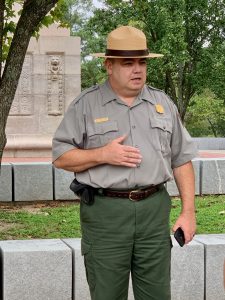
The first representative assembly in English North America convened in the Jamestown church on July 30, 1619. The General Assembly met in response to orders from the Virginia Company “to establish one equal and uniform government over all Virginia” and provide “just laws for the happy guiding and governing of the people there inhabiting.” A few weeks later came the first unsolicited arrival of Africans to Jamestown, marking the beginning of de facto slavery in the colony.
With the introduction of tobacco and the arrival of the first indentured slaves Jamestown created an economy that was able to survive and expand.
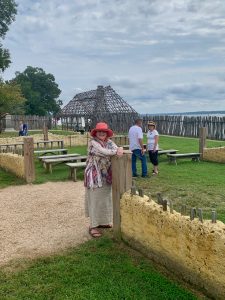
As Jamestown grew into a robust “New Towne” to the east, written references to the original fort disappeared. In 1676 a rebellion in the colony led by Nathaniel Bacon sacked and burned much of the capital town. Jamestown remained the capital of Virginia until its major statehouse, located on the western end of the island, burned in 1698. The capital moved to Williamsburg in 1699, and Jamestown began to slowly disappear above the ground. By the 1750s the land was heavily cultivated farmland erasing all the above ground structures.
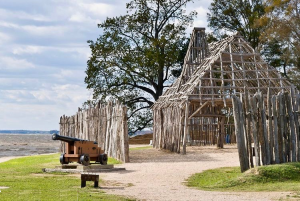
In 1893 Mr. and Mrs. Edward Barney owned the property that was Jamestown. The Barneys gave 22-1/2 acres of land, including the 17th century church tower, to the Association for the Preservation of Virginia Antiquities (now Preservation Virginia). By this time James River erosion had eaten away the island’s western shore; the common belief was that the site of 1607 James Fort lay completely underwater. With federal assistance, a sea wall was built in 1900 to protect the area from further erosion. The remaining acreage on the island was acquired by the National Park Service in 1934 and made part of the Colonial National Historical Park.
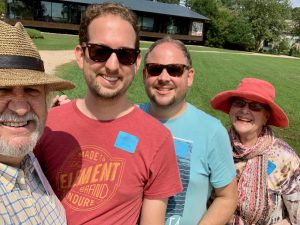
In 1994 an extensive survey of the property was done which resulted in finding the foundations of the original fort. These excavations revealed 1.5 million artifacts and greatly increased the understanding of this first chapter in American History.
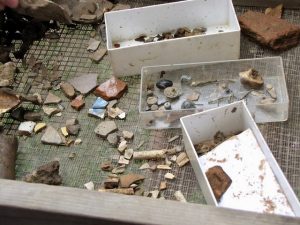
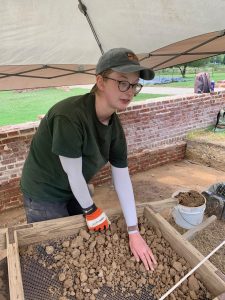
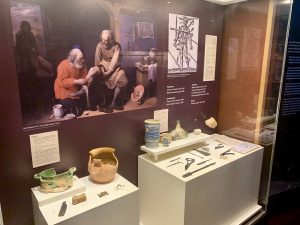
Today, the Preservation Virginia Society and National Park Service jointly operate Jamestown. Upon our arrival ,we learned that Ranger Bill would be doing a talk in a few minutes and we arrived in time to listen in. Ranger Bill brought to life much of the history of the area and pointed out various significant points of interest. After our introduction talk we walked through the recreated fort, visited the museum with all many of the artifacts on display and generally had a very nice time.
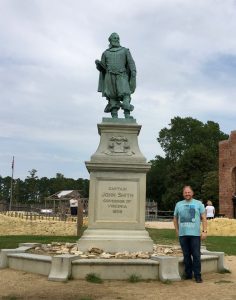
After we left, and had posted a few pictures on Facebook, we learned that Chris is related to some of the early Jamestown settlers. It seems that on his mother’s side of the family, his great grandmother…..the Slaughter line from Upper Slaughter, England help settle Jamestown. John Slaughter came over from Upper Slaughter about 1610-1612. His wife and son, John, joined him about 1615-1617. John, the father, was killed in an Indian massacre outside of town. His wife died and is buried in Jamestown. John, the son ,married and had 3 sons in Jamestown. Who knew that Chris comes from such old and hearty stock? The Slaughter Family is listed in the settler’s books of Jamestown. Nice surprise to learn all of this after having visited the place.
